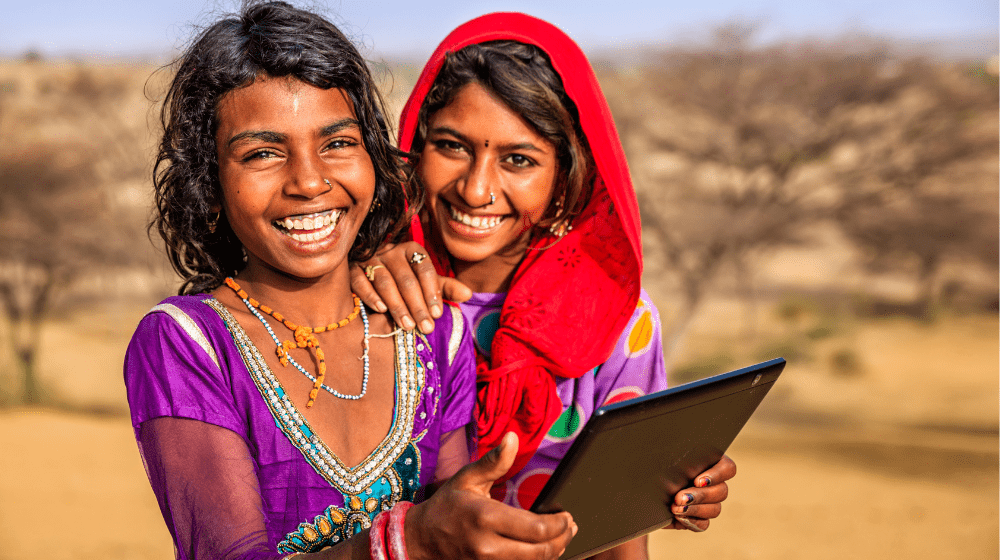The stage has been set for gender equity in Digital India
We need a comprehensive strategy to ensure that our economy gains from female participation
By Andrea M. Wojnar & Kanishka Agiwal are, respectively, UNFPA India representative and country director–Bhutan, and head–service lines, AWS India Pvt Ltd
Establishing India as a ‘metapower’ does not seem too distant an aim. India continues to push forward as a digitally powered and empowered nation at an astonishing pace. With its position at the G20’s helm and drive towards a trillion-dollar-plus digital economy, the country has its building blocks in place to be at the forefront of the next digital revolution.
However, our digital gender divide needs to be tackled. Addressing this will enable the Indian economy to achieve more inclusive growth in the long-term.
As per the National Family Health Survey (2019-21), only one in three women in India (33%) have ever used the internet, compared to more than half (57%) of men. Rural India faces an even more pronounced divide, with men twice as likely as women to have used the internet (49% vs 25%).
India is home to the largest number of women anywhere in the world—an estimated 691 million. This represents 691 million opportunities for women to contribute, participate and innovate in this ever expanding and dynamic digital ethos.
India’s digital revolution will accelerate once three gendered barriers are addressed:
Lack of access: Accessibility is linked to low levels of infrastructure, coverage and smartphone penetration, and gender inequality further underpins the low access that women and girls have to digital devices and services. Enabling smartphone and internet access through wider connectivity and penetration in rural areas, providing affordable solutions and educating households on the benefits of digital access can go a long way in bridging the access gap that women and girl children face today in rural India.
Digital illiteracy: Inequality in functional literacy also represents a major contributor to the gender digital divide. Girls with lower levels of functional literacy often cannot make optimum use of smartphones; 59% of women in the age group 15-49 years across urban and rural India have not completed 10 or more years of schooling, as per the National Family Health Survey (2019-21), with rural India alone at 66%. This segment needs a big push to fully participate in and learn from the digital world, stay safe online and develop critical and analytical skills. Digital education would help this large cohort leapfrog the traditional development gender divide.
Cyber safety and security: With lower levels of digital literacy and skills than men, women and individuals of other non-privileged genders may be more vulnerable to online harassment, cyberbullying and cyberstalking. These digital risks and harms reduce or restrict ways in which women and girls use digital technologies, which in turn widens the digital divide.
Levelling the playing field: While giant leaps have been made, three areas that can play a catalytic role should be prioritized for immediate action.
One, designing digital solutions to advance gender equity: Digital solutions that take into consideration what women and girls need. The involvement of girls and women in co-creation will accelerate digital adoption and help reduce the digital gender divide and accessibility.
Two, digital literacy and capacity building: Young women and girls who are empowered and given early access to digital technology learn to engage it more productively. They absorb new knowledge and skills, reach out socially and are generally more confident in their endeavours. Digital literacy is increasingly seen as essential for employability and has been linked to higher earning potential and new economic opportunities.
Three, responsible technology: Protecting user privacy and data must be a top priority to ensure that technology is not used to perpetuate harmful biases or discrimination against women and girls. Stakeholders in the technology industry and the government need to collaborate on assuring people safety in cyber space, even as users are educated and encouraged to adopt responsible behaviour as well. Ensuring a safe and secure digital environment for women and girls is everyone’s business.
The Indian government is taking major steps to ensure women and girls are included in the digital revolution and are able to benefit through education, commercial opportunities and digital transactions. Initiatives like the Pradhan Mantri Gramin Digital Saksharta Abhiyan under the vision of Digital India aims to bridge the digital divide. It specifically targets our rural population, with 60 million households covered. In the education sector, the National Digital Library for children and adolescents proposed in the Union budget for 2023-24 will play a pivotal role in narrowing the digital divide and ensuring equitable access to quality education and improvement in digital literacy levels. The ‘Stay Safe Online’ campaign by the ministry of electronics and IT, conceptualized as part of India’s G20 presidency, is another example of the government prioritizing awareness creation of the internet, social media and digital payment facilities for the benefit of citizens.
The stage for a transformative and gender-equal digital revolution has been set. We must take advantage of the mutually reinforcing forces of economic empowerment, social empowerment and digital empowerment, all of which are on the rise in India.
Full digital access and technology at the fingertips of women and girls would open a wide window of opportunities so that they can aspire to be well informed, develop more comprehensive world-views and make the most of their potential for their own benefit and society’s. It’s a divide worth bridging.
As Published in The Mint on 22.3.2023


